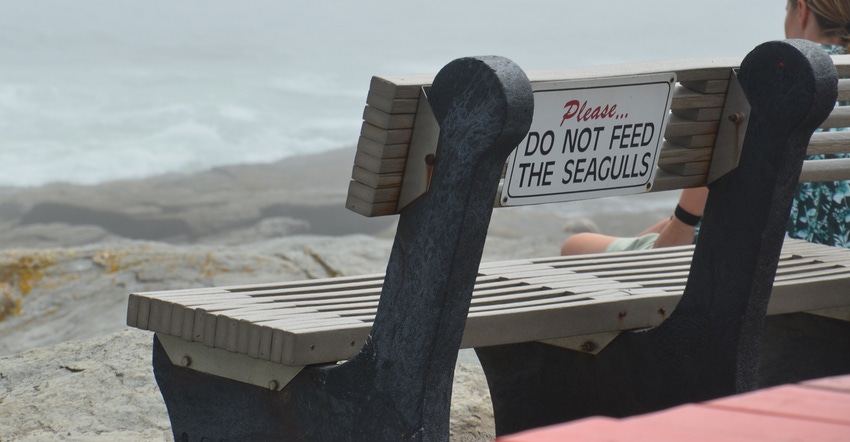
I recently had the chance to travel through several states on the way to eastern Maine. My wife, Carla, and I chaperoned a team of FFA members competing in a national wildlife contest held near Acadia National Park near Winter Harbor.
Here are signs along roadways and in public places that you won’t likely find in Indiana. They should bring a few chuckles, and give you a feel for the differences in climate and lifestyle.
• Moose crossing. This is a yellow highway sign, similar to “deer crossing” signs you might see here. Except there’s an image of a moose. The wording varies, but the message is clear: You just might find a moose in the road!
Actually, moose are more common in the upper part of Maine. We didn’t see a moose — at least not a live one. We were on the southern edge of the area they call home in the Northeast.
• Don’t feed the seagulls. You need an ocean to see this sign, and Indiana doesn’t have one. This one was spotted on the back of a bench overlooking a rocky shore in southern Maine.
Technically, as pointed out by wildlife experts in Maine, most gulls aren’t really seagulls. They don’t venture far out to the sea at all. “Seagull” has become a popular term to describe many different types of birds that are really just gulls.
• Don’t dump lobster water on the grass. No fooling! It’s a real sign in a pavilion area of the Schoodic Institute, a nonprofit research facility adjoining Acadia National Park which hosted the wildlife event. You can boil lobster there and serve them to guests in the shelter house. You just can’t dump the water on the grass — it’s seawater full of salt.
• Text park ahead. Say what? It’s what it says it is — instead of a rest park with bathrooms and such, it’s just a place along the tollways to pull off and text on your phone. They obviously frown on texting while driving in the states where we traveled. The only vehicle I saw at a text park was a tow truck, obviously waiting for a call for someone who had crashed — possibly while texting!
• Park at home, not in the left lane. OK, that may not be exactly what the electronic signs along interstates and tollways in New England say, but it’s close. They’re quite creative with their electronic signboards for motorists. The message is clear: If you’re going to travel in the left lane, then get a move on and don’t dawdle!
• Watch for plows. These are also yellow highway signs. And they aren’t talking about moldboard plows. The area along Lake Erie on the way to Maine and along the coast in Maine can get incredibly large snowfalls. Snow plows are a way of life. Snow days for schoolkids are not. According to local residents, it takes more than a few inches of snow to catch a school official’s attention.
About the Author(s)
You May Also Like




